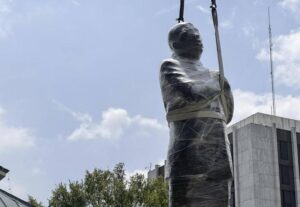In the annals of Black American history, one story stands out as a testament to resilience, prosperity, and the enduring spirit of entrepreneurship: the rise and fall of Black Wall Street. Nestled in the Greenwood district of Tulsa, Oklahoma, Black Wall Street flourished in the early 20th century as a vibrant epicenter of African American business and culture.
However, its legacy is marred by the devastating Tulsa Race Massacre of 1921, which saw the destruction of this prosperous community. This article delves into the rich history of Black Wall Street, from its humble beginnings to its tragic demise, shedding light on the triumphs and tribulations of Black entrepreneurship in America.

The Birth of Black Wall Street:
At the turn of the 20th century, segregation and systemic racism barred African Americans from accessing mainstream economic opportunities. In response, Black communities across the United States began to establish their own businesses, schools, and institutions. Greenwood, Tulsa’s predominantly Black district, emerged as a beacon of economic self-sufficiency and prosperity, earning the nickname “Black Wall Street.”
The Rise of Prosperity:
Fuelled by a spirit of entrepreneurship and determination, Black-owned businesses thrived in Greenwood. From banks and grocery stores to theaters and hotels, the district boasted a bustling commercial center that catered to the needs of its residents. Entrepreneurs like O.W. Gurley, J.B. Stradford, and Dr. Andrew C. Jackson played pivotal role in shaping the economic landscape of Black Wall Street, creating opportunities for wealth accumulation and community development.
Also, read; Zeita Merchant Makes History as First Black Female Admiral in U.S. Coast Guard
Cultural Flourish:
Beyond its economic prowess, Black Wall Street was a cultural hub teeming with creativity and innovation. The district was home to renowned musicians, artists, and intellectuals who contributed to the vibrant cultural tapestry of Greenwood. Jazz clubs, theaters, and literary societies flourished, providing avenues for artistic expression and cultural exchange within the Black community.
Tragedy Strikes: The Tulsa Race Massacre of 1921:
The prosperity of Black Wall Street was shattered on May 31, 1921, when a violent mob of white supremacists descended upon Greenwood, unleashing a wave of destruction and terror. Over the course of two days, homes and businesses were looted, burned to the ground, and lives were lost in one of the deadliest episodes of racial violence in American history. The aftermath of the massacre left Greenwood in ruins, displacing thousands of residents and erasing decades of progress and prosperity.
Rebuilding and Resilience:
Despite the devastation wrought by the Tulsa Race Massacre, the spirit of resilience and determination endured in Greenwood. In the aftermath of the tragedy, Black residents rallied together to rebuild their community from the ashes, demonstrating unwavering resilience in the face of adversity. While the physical scars of the massacre remain, the legacy of Black Wall Street lives on as a testament to the strength and resilience of the human spirit.
Conclusion:
The story of Black Wall Street is a powerful reminder of the triumphs and tragedies that have shaped Black American history. From its humble beginnings as a thriving hub of Black entrepreneurship to its tragic demise at the hands of racial violence, Black Wall Street embodies the resilience, creativity, and perseverance of the African American community. As we reflect on its legacy, we are reminded of the importance of preserving and honoring the rich heritage of Black entrepreneurship and culture, ensuring that the lessons of Black Wall Street are never forgotten.




